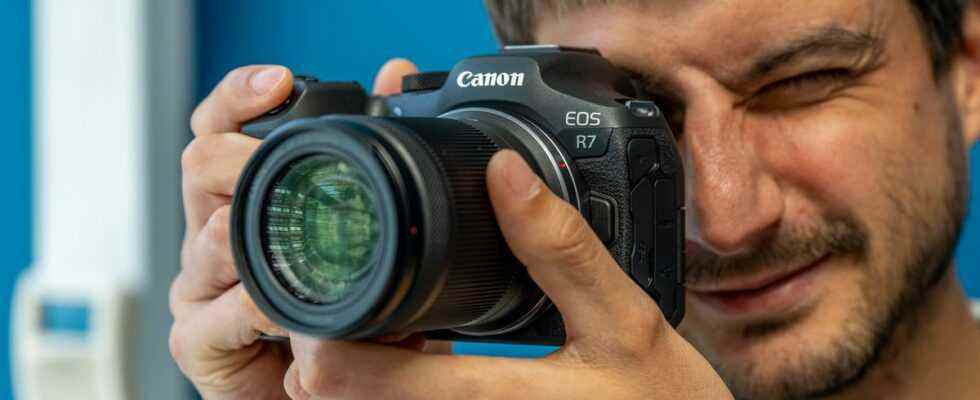With its EOS R7, Canon intends to strike a blow by offering a very responsive device, able to compete with the best models for sports or wildlife. But it doesn’t come without some compromises.
The Canon EOS R7 does not look like much, but once turned on, you quickly realize the explosiveness of the beast. Inspired by its predecessor, the EOS 7D Mark II reflex, this model is the best ally of wildlife or sports photographers, who swear by APS-C, with a revisited 32.5 megapixel sensor and its Digic X processor. In this, it constitutes a serious rival for the Fujifilm X-T4, which, despite its very different design, plays a little in the same category.
X-T4 vs EOS R7: Canon advantage
Also, in this article devoted to responsiveness, we wanted to compare their performance in terms of development. The results, you will see, are quite similar, with both devices facing the same limitations.
During our measurements, we released the EOS R7 with its kit zoom, the recent RF-S 18-150mm F3.5-6.3 IS STM. As for the X-T4, we tested it at the time with a higher-end but older zoom, the Fujinon XF 16-55mm f/2.8 R LM WR.
As we can observe, the two devices deliver very similar performance, both in terms of starting and daytime photos and in the sequence of shots. However, the Canon is almost twice as reactive at night, a shame when it was tested with a less luminous lens!
When we switch to burst mode, we see that both cameras display, again, excellent results. In mechanical shutter, the R7 is somewhat disappointing, not reaching the 15 fps announced, when the X-T4 slightly exceeds them. In electronic shutter, however, no problem. The X-T4 does a little better than the promised 20 fps (21.3 fps), but remains behind the Canon with 30 measured fps. The X-T4 is also capable of hitting 30 fps in bursts, but that requires a significant 1.25x crop.
Strong gusts and fearsome tracking
In all burst modes, autofocus tracking is fully functional. The R7 is really very effective, it’s quite impressive – for humans, as for animals or vehicles. Almost all subjects are hung without concern, where the older X-T4 remains a good notch below.
These data are therefore more in line with those announced on the technical data sheets. We are in the presence of ultra-fast devices, capable of capturing a large number of images without flinching.
Beware of the effect of rolling-shutter
Canon highlights the capabilities of its camera for wildlife and sports photography, especially thanks to these 30 fps with the electronic shutter. However, the successor of the 7D mark II is not completely equipped for the practice of sport or fast movements.
Indeed, unlike cameras dedicated to sports photography such as the Canon EOS R3, the Sony Alpha 1 (A1), the Nikon Z9 or the Fujifilm X-H2S, the R7 does not have a sensor. stacked. And in electronic shutter, there is no solution to compensate for the effect of rolling-shutter when capturing high-speed, heavy-burst footage.

Also, when photographing movements that are too fast while wanting to take advantage of the 30 fps (or the electronic shutter), deformations will be visible on certain parts of the image, as we can observe in the previous illustration , with the spokes of the bicycle wheel. This is a factor to consider before shoot golf or cycling scenes, for example.
A buffer still too fair
Finally, last compromise, the buffer memory. Like the X-T4, you can’t count on a big buffer. In Jpeg + Raw mode, the Canon R7 only captures between 70 and 80 files, i.e. only around thirty shots, before stopping to write the images to the SD card (here, two UHS-II standard slots ). It is possible to double this capacity by opting for compressed raw, but that is still only a maximum of 2 seconds of burst between each write on the card.
To compensate a little, Canon has integrated a “pre-shoot” option. This keeps in memory the images captured 0.5 seconds before pressing the shutter button. A system comparable to what Olympus / OM System already does with the “pro capture” mode.
A very responsive APS-C hybrid
Although reactive, the Canon EOS R7 cannot replace a camera specialized in sports photography. Nevertheless, it remains formidable in terms of focusing and offers very effective burst tracking.
To learn more about the Canon EOS R7, don’t miss our full review, available soon.
